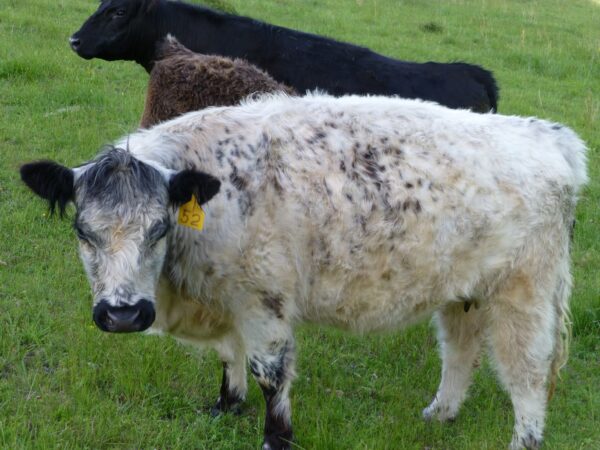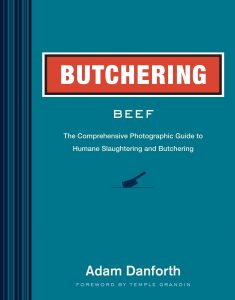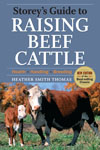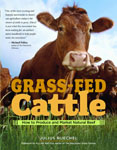
Breed Facts
Status:
Recovering
Use:
Beef, Dairy
Adult Weight:
1200 – 2000 lbs.
Temperament:
Docile
Experience Level:
Novice – Intermediate
Notes:
Thrives in cold, wet climates on poor forage; “light grazer”; medium size; polled; good maternal instincts; excellent beef
Country of Origin:
Scotland
GALLOWAY CATTLE
Galloway cattle originated in the rugged hill country of southwestern Scotland. The native cattle of this region were consistently hardy and thrifty, though they varied in color, horn type, and conformation. During the late 1700s and early 1800s, breeders standardized the Galloway and selected for polled beef cattle that retained their regional adaptation. The Galloway then became a valuable part of trading between Scotland and England.
The Galloway is related to the Aberdeen Angus, a breed developed in northeastern Scotland about the same time as the Galloway. A herdbook for the two black, polled beef breeds was established in 1862, with a separate Galloway herdbook opening in 1877. Since then, the breeds have diverged, with the Angus selected for rapid growth on better feed, and the Galloway for its ability to thrive on poor forage in a cold, wet climate. The British Galloway Cattle Society was also formed in 1877.
Galloway cattle were imported to the United States in the 1850s and the American Galloway Breeders Association was founded in 1882. Although the Galloway’s success initially rivaled the Angus, by 1900 it was found in a smaller niche as a range breed on The Great Plains.
Galloway cattle are polled and medium in size. Cows weigh about 1,200 lbs. and bulls 1,800 to 2,000 lbs. The long body conformation increases the production of more expensive cuts of meat. Galloway beef is high quality and can be marketed in a variety of specialty niches, such as grass-fed and organic beef. The cattle grow a long, thick double coat in the winter as part of their adaptation to the cold; Galloway hides were substitutes for buffalo robes in the early 1900s, and they can also be made into rugs.
Black is the most common breed color, but they can also be red or various shades of dun. White Galloways (with black or red points, including ears, eye rings, nose, feet, and teats) occur more rarely. It is not unusual to find roan and speckled animals in white herds as well. Belted Galloways, known for their solid color bodies with white “belts”, originated within the Galloway breed but they are generally registered with a separate association. However, some belted animals continue to be registered in the Galloway handbook, and the color is recognized as part of the Galloway breed.
The Galloway is rare in North America, but it is increasing in numbers globally with an estimated population of about 10,000. In Europe, the breed is considered a “light grazer,” meaning that its relatively light bodyweight makes it preferred for grazing where heavier animals would damage marginal lands. Galloways are also known for their browsing ability, giving them added value in the management and diversification of grasslands. They were developed for cold regions but can do well in most climates.
In North America, the Galloway stands out for its forage efficiency, hardiness, and maternal qualities. It is a docile breed that is good for beginning to intermediate farmers. Galloway beef is tender and well-marbled and reported to be lower in cholesterol than other types of beef. Galloway milk can be used to make butter and cheese.
The breed’s history as a pure breed means that Galloway cattle are genetically consistent and impart outstanding vigor to crossbred offspring. Black offspring have the advantage of receiving the same premium price given to Angus cattle as part of the Certified Angus Beef program. Recent market changes favoring efficient production and high-quality beef may lead to a revival of interest in the Galloway, a breed that is far too useful to remain rare.
Did you know:
History shapes breed identity and purpose. It also helps inform heritage breed conservation. The Livestock Conservancy documents these histories for each livestock and poultry breed we work with. Love History? Join today at Membership & Subscribers – The Livestock Conservancy for as little as $4 monthly.

Breed Facts
Status:
Recovering
Use:
Beef
Adult Weight:
1200 – 2000 lbs
Temperament:
Docile
Experience Level:
Novice – Intermediate
Notes:
Thrives in cold, wet climates on poor forage, medium size, polled, good maternal instincts, excellent beef
Country of Origin:
Scotland
You may be interested in…




